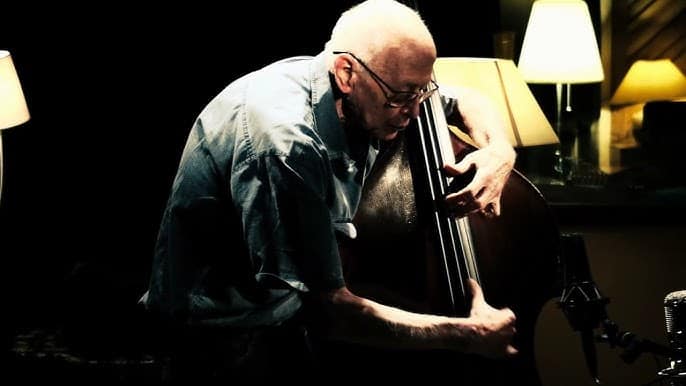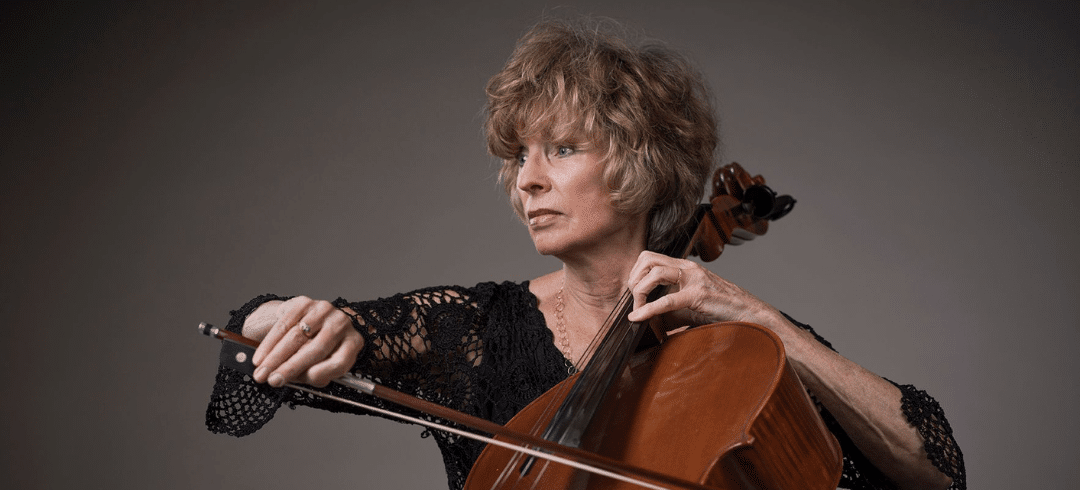6 out of 10 soloists cannot tell a Strad from a new violin
mainThe results are out today from Claudia Fritz’s Paris Experiment and they make bleak reading for the many dealers and auction houses that milk a musical fortune from the sale of old instruments.
Ten international soloists blind-tested six new and six old Italian violins under controlled conditions. More than half of them thought the new ones were old. That blows a big hole in an expensive myth.
Read a summary of the results here.






This isn’t really so surprising. Though techniques developed 400 years ago remain the foundation of a luthier’s training. The engineering behind most instruments of the time didn’t take into account modern string tension, technical requirements, tuning (A415 vs A440/441/442/etc.), or repertoire. All older instruments have been reworked, and as far as I know, Vuillaume re-graduated most of the Strads that came into his shop, as well as changing their necks, fingerboards, etc. The very best modern makers can create instruments that sound just as good, if not better than the old Italians, and are often preferable because they’ve been engineered to perform at their best while dealing with modern repertoire and techniques.
Price difference between old and new instruments, however, must also take rarity, collectability, and historical significance into account, though I’m sure it alone doesn’t entirely explain the enormous price gap between older and newer instruments.
Why does it make “bleak reading”? If, as seems the case by virtue of the prices, famous old violins are only sold to collectors and destined never to be played again, why should the dealers worry about this new revelation?
Bleak? I think it’s very encouraging. Not everyone can get their paws on a Strad or a Guarnieri — it is great news to know that they have high quality alternatives available. And that the luthiers of the world are continuing to produce work of such calibre.
This is absurdity in the extreme.
Who are the so called soloists of international renown?
When I was a teenager I was assisted by two players of “international renown” and they really did know what they were doing and talking about, in the purchase of an italian violin. All parties including me were unanimous in our choice. The decision was taken quickly and the test was taken with at least two people at a time testing the difference between the sound under the ear and the sound at the back of a large room. The test involves playing three octave scales all on one string to check evenness of tone on each of the 4 strings and then playing two octave scales across the strings in first 3rd 5th position to check evenness across the strings.
Then Brahms concerto carrying power, opening of Bruch slow movement for sweetness and carrying power. Hey presto, no problem.
It is well known that new instruments have a strong robust tone under the ear and no one of serious stature would attempt to test an instrument without help from trusted people of experience.
This so called scientific test is I repeat an absurdity, designed to get people to invest money in over priced modern instruments using as persuasion the argument that they are cheaper than the great instruments and at least as good.. This “game” has been going on for about 40 years now. The dealers were claiming that the modern instruments would settle and mature as did the great instruments but this just hasn’t happened.
Also, the instrument should not be tested in show rooms with glass reverberating cabinets as all instruments sound good in such environments.
“Plus ca change, Plus c’est la meme chose.
They tested instruments in a hall, and 50+ professional musicians,dealers, and critics judged projection and quality. The “so called soloists of international repute” are just that . . . there’s a list in one of the articles floating around, but include Elmar Oliviera, a recent 2nd place winner of the Queen Elizabeth, and a few other big (if not quite household) names.
Ironically enough I’m currently playing a modern viola that isn’t loud under the ear, but carries like nothing I’ve ever played before. Pianissimo to the back of a concert hall isn’t a problem for the first time in my life. That said, violas are a whole ‘nother animal.
As far as getting people to invest in over-priced instruments . . . . they’re asking *at least* $45 million (opening bid) for a strad viola, nowadays. We working musicians better hope to be able to find something somewhere to play at this rate, and thankfully modern instruments do stand up to older ones.
Were the bows used the same in each trial?
They were allowed to use their own, so I’m sure each brought several of their favorite bows.
There’s a good report here: http://phenomena.nationalgeographic.com/2014/04/07/stradivarius-violins-arent-better-than-new-ones-round-two/.
The test was carried out carefully and professionally. They were given a lot of time, the opportunity to have an accompanist or not, the chance to hear the instruments played be somebody else, their own bows, and played in both a violin maker’s house and a concert hall. And the results are unambiguous.
It’s interesting that your reaction is so strong. Why is that? It’s clear that this experiment wasn’t absurd, but quite the opposite. I guess it challenges people’s confidence in their own judgement and in their long-held beliefs.
Even cellos, whose sound under the ear is farther from the ear than a violin’s, can be very different in a hall. Need other ears/players you trust to get a true picture.
The violins were tested in a hall.
If this keeps up, ruffians are going to stop stealing Strads on the subway.
They’ll still be immensely valuable, I think. But how do you fence a strad anyway, except hold it for ransom?
I’ve wondered the same thing. Like, when a priceless work of art gets boosted from a museum, who exactly is buying it after that, and for what purpose? Where are the super-secret galleries that display stolen art? Are they sitting in the homes of obsessive kleptomaniacs and completists? And, who covets an instrument so much so that (s)he’s willing to steal it at great risk, just to *have* the thing for her/himself?
Anyway, if you’re trying to get rid of anything, I know a guy who knows a guy. You know where to find me.
This also doesn’t surprise me in the least, as I have asked the many string soloists and orchestra musicians that I know the same question and the vast majority will truthfully answer by saying that if the modern instrument is of high quality, then they simply can not tell the difference. So much of the old string instrument world is nothing but hype, not based on anything more than greed and having interests other than music mixed into the sale.
The most egregious account was the recently over hyped story about the Strad viola with a $45 million dollar price tag. This is surely the most disturbing and calculated string instrument sales I’ve ever seen or heard about. I, together with several violin and viola playing friends were sickened by the way this instrument’s sale was handled by the media, trying to make one believe that just because it is going to be tried to be sold for such an extortionist price, then it simply has to be the greatest viola ever made and that has ever existed on the face of Earth. They got everyone in on the act, Sotheby’s auction house who carefully orchestrated the whole thing with a rather dubious cast of characters, including journalists who quite obviously knew and know absolutely nothing about music, nor instruments, only that it was expensive and therefore it must be great. Then they employed an ego driven violist named Carpenter, who was filmed espousing the greatness of the instrument and then claiming himself to be the value of the viola, proclaiming himself to be the “$45 million dollar violist”! How throughly tacky, tasteless and vulgar. I had a dinner with eight members of the string section of one of the big five U.S. orchestras and they all said the whole thing just made them sick and that it does nothing to help great instruments or musicians gain access to them. Quite the contrary. They unanimously found this whole Strad viola story to be an obscene manipulation and nothing more and nearly all said that their colleagues felt the same and looked at the entire thing and all this involved with disdain.
This finding is nothing new. And it will be ignored and suppressed again. Because a whole industry lives from the myth of the old instruments. Including the makers of new violins !!! Because the prices they can achieve in the market are directly related to the prices mystified “top instruments” can achieve…
And what is the meaning of “sounding better”? Second, how does a 2m$ violin sounds? Twice as better as 1m$ instrument? Just some points to consider while reading this so called research.
Such interesting reactions to a pretty objective piece of science! Read a full report and judge for yourself.
http://phenomena.nationalgeographic.com/2014/04/07/stradivarius-violins-arent-better-than-new-ones-round-two/
Thanks for the link, but it’s not the full report. Have you read this – http://www.artsjournal.com/slippeddisc/2012/01/exclusive-how-i-blind-tested-old-violins-against-new.html
This experiment reminds me of another experiment. In this one they asked why fires are occurring. They observed that each time a fire was taking place there were several fire trucks from the fire department in the scene. So they concluded that fire trucks cause fires.
In the violins study they asked if there is any difference between old and new violins. They gave some violins to musicians who played them for the first time in their life, and they asked other musicians if there was any difference in the sound. These musicians didn’t find any essential difference, so the only possible conclusion of this “objective piece of science” is that there’s no difference between ALL old and new violins.
OR, MAY BE THERE ARE SOME OTHER POSSIBLE REASONS FOR THAT??
Ariane Todes, editor of The Strad magazine, said: “They don’t all sound fantastic but a good one that’s been set up properly – the thickening of the wooden plate, the movement of the sound post and bass bar – sounds fantastic.” I would add that if you have a stradivarius and nobody to play it, it’s just a piece of wood.
So while you read this article, ask yourself is they really had those good stradivari with the right people to play it. That actually would be an objective piece of science.
Those of us who have been fortunate to perform on great old Italian instruments know, however, that it takes not weeks but months and years to really learn to play them and that they continue to inspire new colors from us even after decades. The performers in the “test” were not given this opportunity and these qualities were not tested.
My 320-yr-old instrument sounds better today than 40 years ago and is worth something like 20 times more than it cost back then. Will this be true of a modern fiddle?
The purpose of the study is not to assess the monetary value of the instruments but to ascertain which play and sound better.
In 40 years, will the 21st century instrument be “worth something like 20 times more than it cost back then”? Probably not, it won’t have 200 years of myth-making behind it to augment the sales price.
But it sounds better now and probably still will in 40 years whatever it’s price tag. I think musicians buy instruments to play now.
Apparently, this first preliminary report deals with the players’ own impressions “under the ear” only, which means that it is much too early to jump to any conclusions because, as all violinists know, what they hear when they are playing can be quite different from the sound that is being projected into the hall.
What’s also interesting about the reaction is that we’re told that only the very best players can judge the difference in quality between new and old, and that the small panel of ‘international standard players’ used in this study simply isn’t good enough for their opinion to be worth considering.
The obvious conclusion, therefore, is that the ears of the average listener in a concert hall will not be refined enough to be able to judge the difference, so it doesn’t matter whether a soloist plays old or new. Of course, then we’ll be told that the vintage instrument will inspire subtleties in interpretation and performance which listeners don’t realise are occurring but which make a difference to our experience. I’d suggest that when we’re down at that very fine and subtle level, the 0.1% difference perhaps, the quality of the instrument will make less difference than the quality of the orchestra, the sound in the hall, whether or not the man next to us is breathing too loudly or shuffling his programme, what sort of mood we’re in, whether we’re tired, whether the hall is hot etc etc. In short, the extremely subtle differences between the highest quality new instruments and the vintage ones which the top 10 players in the world can judge will make no discernable difference to the performance as experience by joe public.
The other obvious point is that only a blind test like this can remove the unconscious bias towards the instrument which people think should be better. Players want a Strad to be supreme because of the history and the reputation and the cost, and that bias affects their judgement.